If like me, you enjoy seeing amazing buildings then the city of Valencia is certainly no exception! Since Roman times the city has been an important port, place of business, and of religion and culture, and this is very much reflected in the buildings of the city.
Gothic mixes with art Deco, modernist next to art nouveau, wherever you look, there are exciting and interesting places to see. Most of the buildings from the past are still in use today, serving the city and it's inhabitants such as the famous Cathedral below, home of what is reputed to be the Holy Grail.
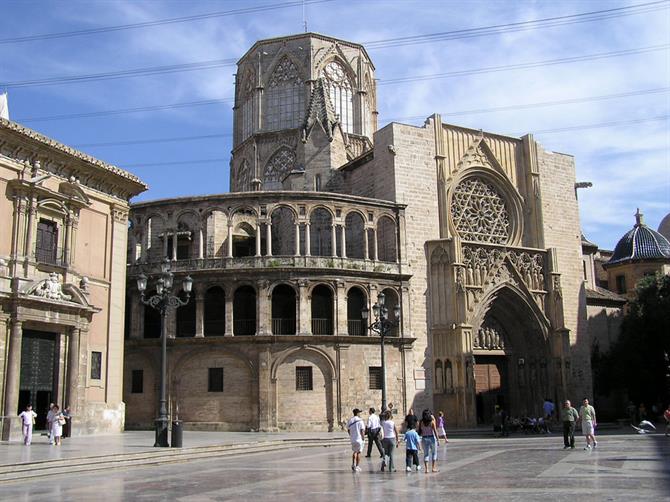
Getting around the city, especially a large place like Valencia is best done by using the integrated transport system, which consists of buses, bike hire, trams and tube trains, more of which can be found here.
There are various places to start from, so let's take the obvious and most well known starting point as the city of arts and sciences, located at the seaward end of the old Turia river.
The city of arts and sciences was designed by Santiago Calatrava and features five distinct "zones" and as you can see, the buildings are truly amazing.
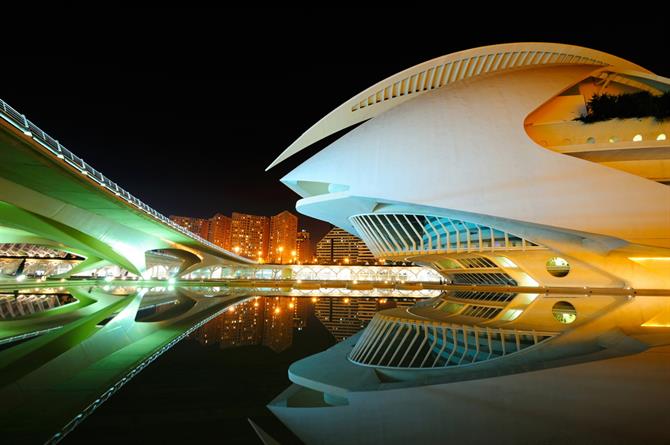
A short walk down the Turia river bed itself, also shows a good history of architecture from the various bridges that span the river, with bridges from the middle ages, right up to the present day, although they now span the largest urban park in Europe, rather than a river, which was diverted away form the city after a disastrous flood during the 1950's.
A short walk from the city of arts, we find the Palau de musica, towering over the park, with beautiful fountains, which perform a display to music, synchronising the water jets in time which each crescendo and every beat, it is amazing to watch, and often happens around mid day but it is best to check the tourism website for the exact times.
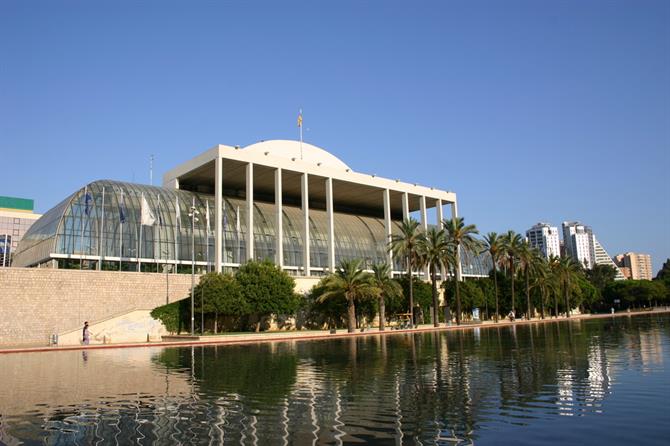
Then keep walking westwards and you will eventually encounter a tube station, namely Alameda, which once you go underground, you find another hidden gem of architecture in the station itself, with giant vaulted ceilings, and walls covered with a crazed white ceramic tile effect.
Take the train to Colon, which is only one stop away and then ascend back onto street level and head for the plaza del ayuntamiento. You could also get off two stops away at Xativa, and come up overground next to the cities massive bullring and the main train station, the Estacio del nord, pictured below.
Make sure you check the Roman remains at street level when you exit Xativa station too, including the short section of cobbled Roman road which lies actually in the tube station concourse..
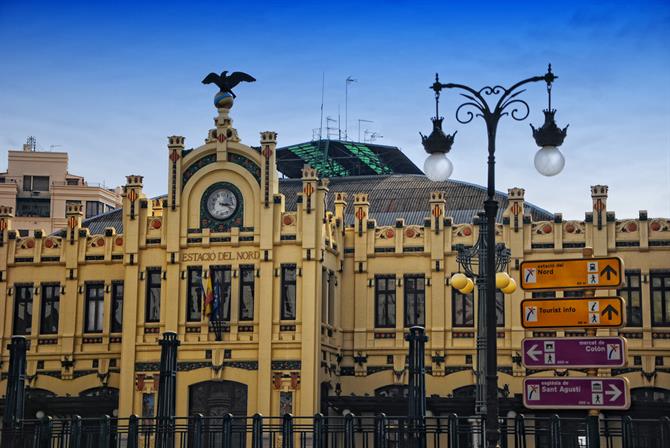
This imposing modernist building was opened in 1917 and carries millions of passengers each year to both local destinations, and to other parts of Spain.
It is centrally located and only a short walk to the city hall square, known as the Plaza del ayuntamiento, pictured below, during the famous fallas celebrations each march.
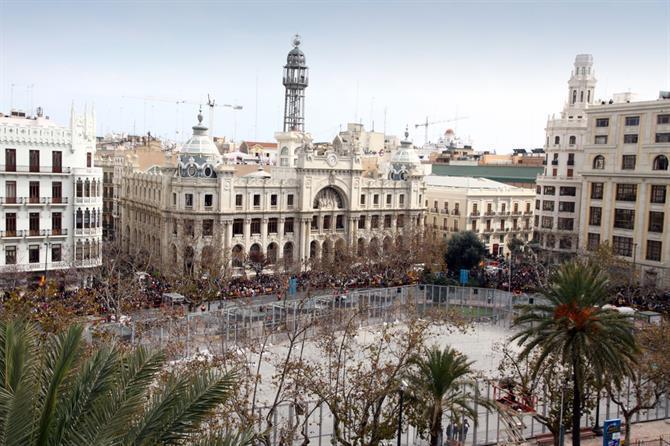
The square is the central hub of the city and many buses terminate outside the huge town hall, or the post office nearby. There are also many hotels, bars, theatres and restaurants just off this square, although you would be advised to take a 5 to 10 minute stroll in the direction of the Plaza Del reina, a lovely wide and open square with a central garden and flower display which is always bursting with colour.
It is this square where you can catch the valencia tourist bus, although if you are feeling like treating yourself whilst staying in the city, then you can hail a horse drown carriage like the one below, to whisk you around the central area in style, albeit slowly!
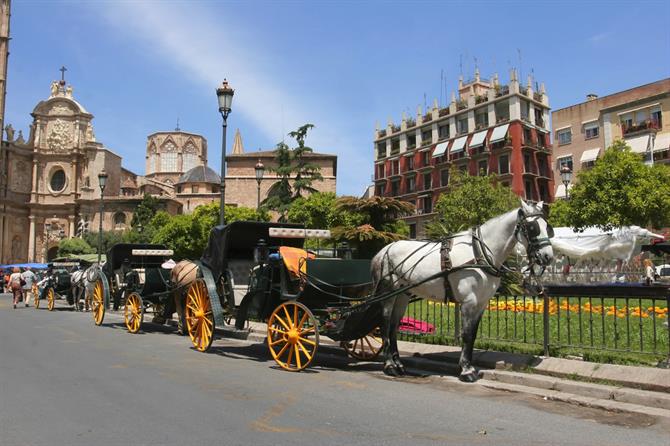
If you fancy a bit of shopping then there are 2 markets that all the guide books suggest that you check out. The nearest one to the plaza del reina is the Mercado central, an imposing modernist building from the early 20th century, built on the site of one of Spain's oldest food markets.
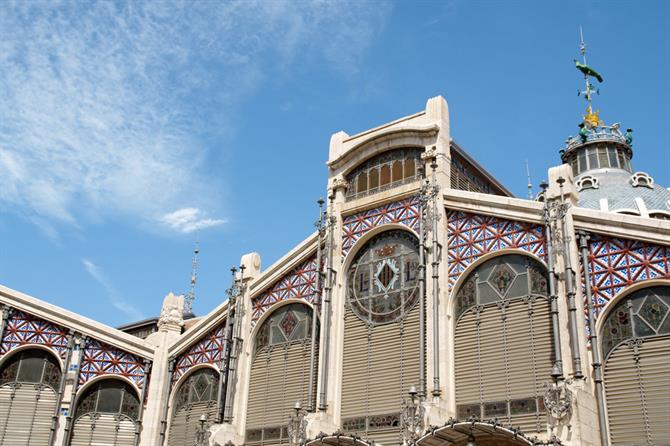
We will doing an article all about the markets very soon, but in this case, the market is a riot of colour, sounds and smells, with only the best quality food, much of it from Spain, and other foods from around the world.
Another great market to visit is the Mercado Colon, pictured below, an art nouveau building, constructed in 1914 and once again is choc full of fantastic food, with the added bonus of some of the cities best bars and places to eat right here for you to enjoy, whilst watching the hustle and bustle of daily life.
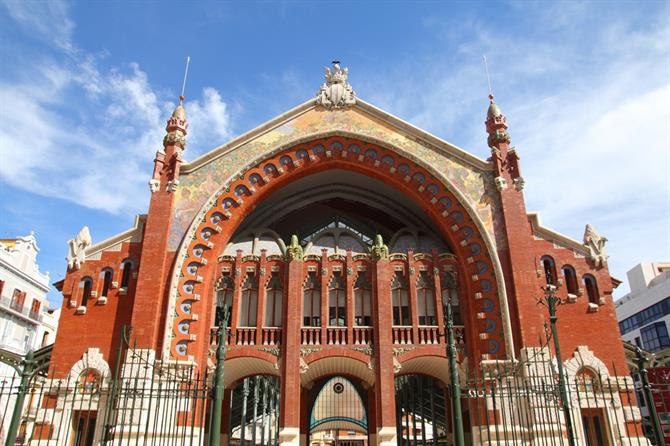
This is the real Spain now, warts and all, and to really experience the city, it's certainly one of my recommendations to go to, even if you don't end up buying anything!
Then you can head for nearby Carmen neighbourhood where many ancient buildings are crowded into narrow streets, with even more bars, shaded alleyways and interesting little shops.
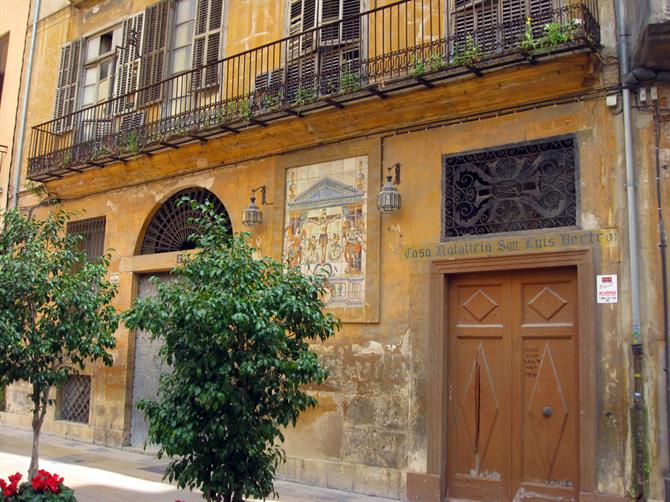
This is the hip part, although more recently, the nearby area of Ruzafa has curried favour with the cool cats, although saying that there are loads more places to discover, far more than this article will allow!
I hope I have given you a taste, and this is all it is for now, a taste of some of the diverse and interesting buildings around the city, and we plan on doing a much more in depth article next month, showcasing even more amazing buildings from the city that you need to visit this year, I assure you!
